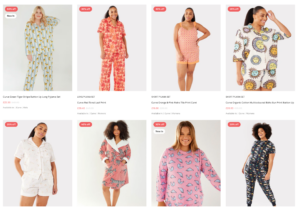New research suggests that, although 57% of consumers want fashion to be more sustainable, with living costs rising, 61% will prioritise price over sustainability when shopping for fashion. 55% also believe that sustainable fashion is often too expensive.
The findings come from a survey of just over 2,000 US and UK consumers from Nosto, the Commerce Experience Platform. And while the data suggests sustainability may be taking a back seat to affordability for many people, it also provides insights that online retailers can use to reduce their environmental impact while remaining in tune with consumers who are feeling the pinch from the cost-of-living crisis
Ecommerce delivery windows have tended to get shorter in recent years (with next day and same day delivery options becoming popular). But 54% of Nosto’s survey respondents said they’d now be happy to have slower deliveries for fashion purchases if it allowed companies to cut the number of truck/van journeys (reducing carbon emissions while also cutting retailers’ delivery costs).
In addition, 58% of respondents indicate that they now try to keep clothes for longer to protect the environment, and 60% agree that one way fashion Ecommerce brands could be more sustainable is to offer repair services. In fact, 42% said they have thrown away fashion items they would have liked to keep because they could not get them repaired.
Recently, the likes of fashion retailer Uniqlo and UK department store, Selfridges, have stepped up efforts to offer repairs services as part of their sustainability initiatives. But the challenge for online retailers is finding a way to scale a profitable repairs solution – especially if they don’t have existing brick and mortar stores.
Guy Little, Head of Brand Marketing at Nosto, said: “The sustainability of the fashion industry is critical to our planet’s health, so it’s refreshing to see evidence that shoppers are willing to change their behavior and play their part alongside retailers. Though it’s unsurprising that the current economic situation is causing consumers to rethink their priorities and put price ahead of sustainability.”
Around half (49%) of respondents to Nosto’s survey agree that product returns are bad for the environment on the basis that they waste fuel, packaging and other resources. But charging shoppers for returns (as many fashion brands are now doing) was rated the least popular way to address the problem according to the survey.
Alternative tactics that consumers agreed would help were: make it easy for shoppers to query items online such as through live chats (64%); display user-generated content (UGC) images and videos of other customers wearing their purchases to show what they look like on real people (61%); and offer virtual try-on tools to help shoppers visualize how they would look in outfits (59%).
Despite the pressure on people’s wallets, there remains a sizeable chunk (39% of survey respondents) who say they would in fact consider paying more for sustainably made versions of the same clothes. However, a lack of transparency surrounding sustainable fashion and mistrust about what brands say about it remain major stumbling blocks. 54% of respondents say they don’t completely trust the claims some brands make about their commitment to sustainability anyway.
Unsurprisingly, 64% of consumers who were polled said one way that retailers can make online fashion shopping more sustainable is simply to provide clearer information to make it is easier to find products that are made in sustainable/environmentally friendly ways. Another tactic that 57% agreed would help is if retailers could allow shoppers to personalize their online shopping experiences so that they are only shown sustainable/environmentally friendly fashions/clothes.
Little said: “This research gives promising suggestions on how brands can help consumers embrace sustainability within fashion. Encouraging slower deliveries and reducing product returns are both opportunities to be more environmentally friendly without requiring customers to spend more. One of the key challenges for retailers, especially as we head into the peak shopping period, is the impact of returns—both financially and environmentally. What we can see from this data is that there are tactics available, such as using post-purchase user-generated images, that retailers can embrace to help reduce return rates and alleviate that pressure.
“Elsewhere, more than half of shoppers struggle to even identify sustainable products— personalization can help retailers ensure that environmentally conscious shoppers are seeing the most sustainable items every time they shop online.”
For more insights from Nosto’s research. download the company’s report.











